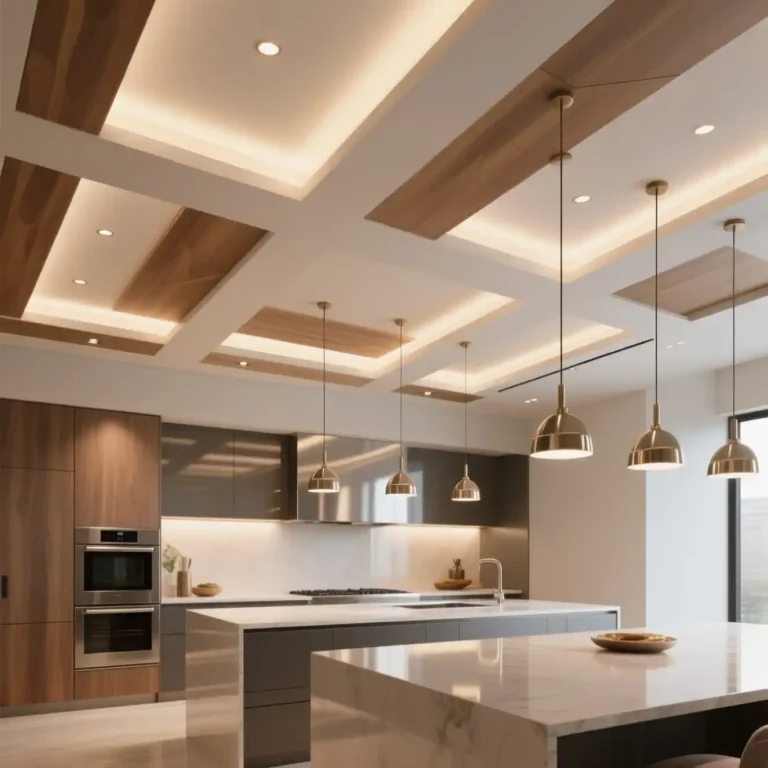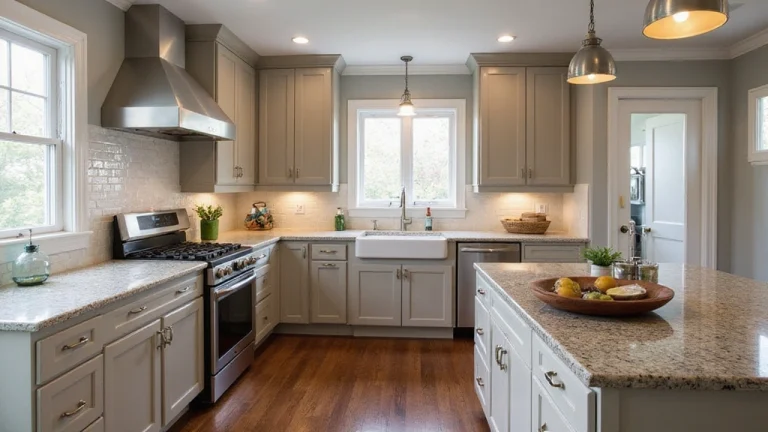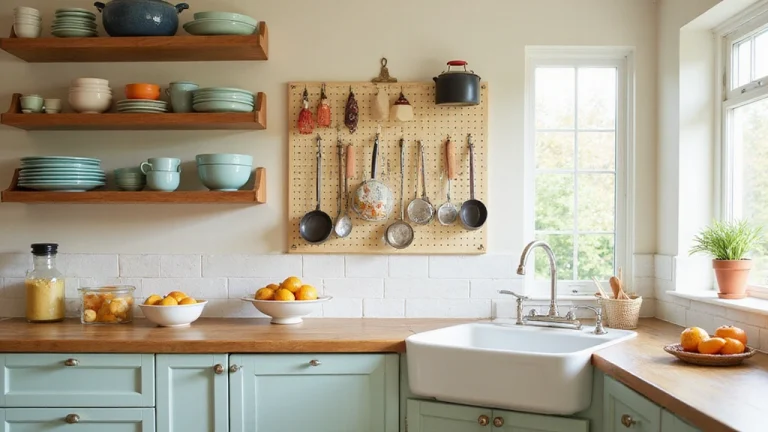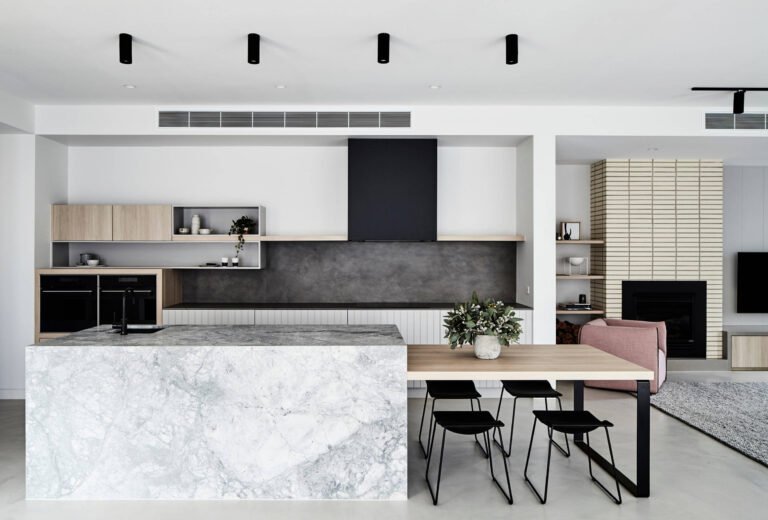The Ultimate Guide to Designing a Functional Kitchen Peninsula
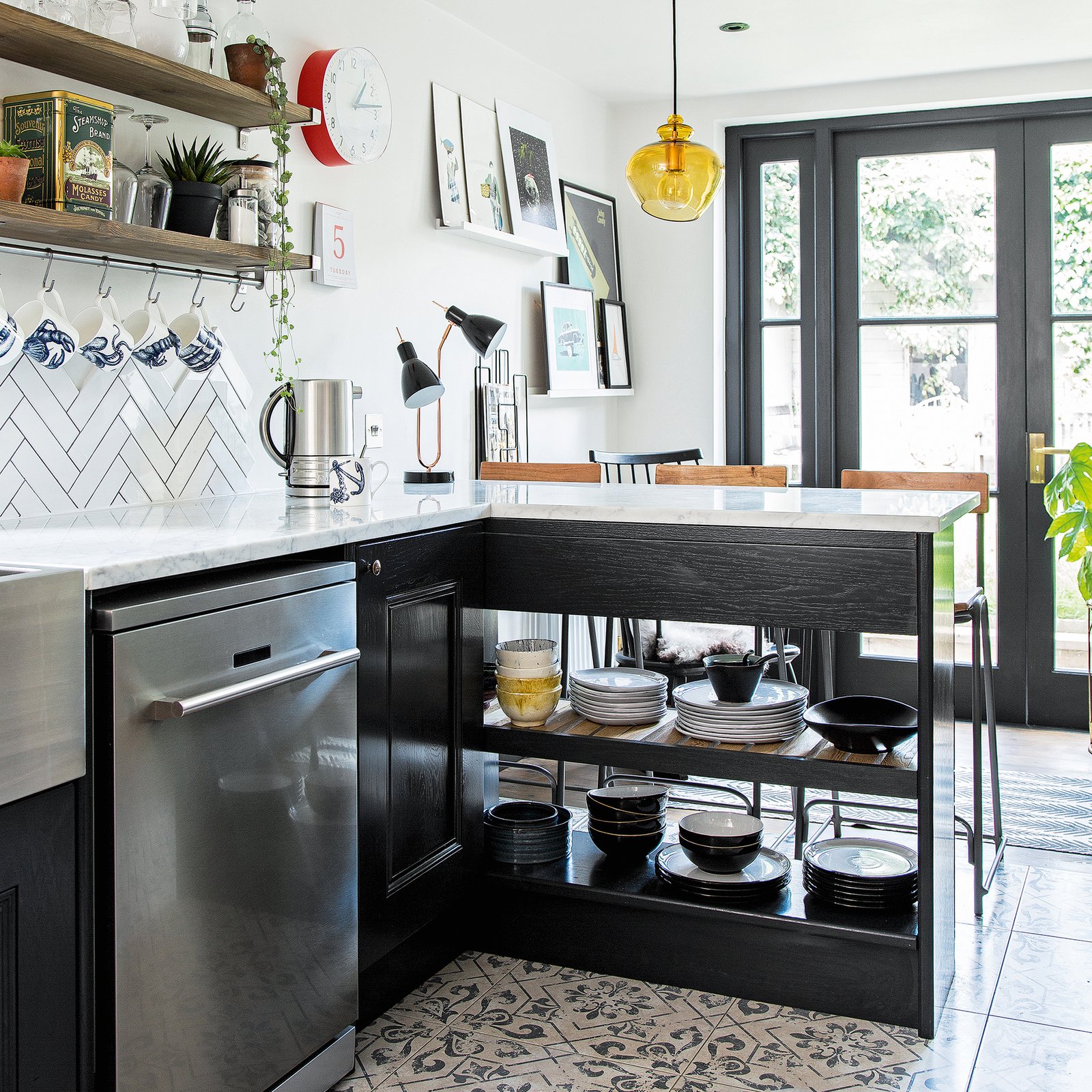
Why I made this post is simple. I keep running into kitchens that look stylish but feel cramped when you actually cook. A well placed peninsula can fix that, making space for prep, seating, and chat. I built this guide to help you design one that works as hard as it looks.
Who it’s for If you’re building or remodeling, this is for you. If you want more counter space without giving up a place to sit, pay attention. This speaks to families who cook together, cooks who entertain, and anyone who hates wasted steps in the kitchen.
What you’ll get You’ll learn how to plan a peninsula that fits your room. You’ll see ideas for size, seating, storage, and appliances that stay in balance. You’ll get tips on materials that stand up to daily use and spots for lighting and outlets. You’ll also find simple checklists you can mark off as you go.
Let’s break it down with real life pieces. Imagine a peninsula that doubles as a prep zone and a casual dining spot. A 12 to 14 inch overhang gives room for stools. The edge can be rounded for safety. The surface can be quartz for easy cleaning, or a warm butcher block for a homey feel. Pair it with cabinets that hide clutter and drawers that pull out spices and pans.
Where do you put sinks, ranges, and the fridge? Keep the main cooking zone within reach of the prep area. Place the sink near a window or a view to keep you calm. Put the fridge at the far end to avoid traffic jams.
Practical tips for materials, lighting, and storage. Choose durable materials. Consider quartz, solid wood, or stainless edge. Add under cabinet light, a pendant, or track lighting. Storage ideas include pull out trays and deep drawers.
To finish, this guide blends current trends with real life. You’ll be able to sketch layouts, test with tape on the floor, or use an app. Next steps are simple. Grab a pencil and map your space.
1. Embrace Minimalism

You want a kitchen peninsula that feels calm, clean, and easy to use. Minimalism makes this real. Clean lines, steady tones, and empty surfaces let the space breathe. You focus on function, not clutter.
– Materials and color
– Choose light-colored wood cabinets or white finishes to brighten the area.
– Pick countertops in quartz or marble for a quiet, classy look.
– Keep walls and backsplashes in soft neutrals.
– Storage without clutter
– Plan hidden storage in the peninsula with pull-out drawers and corner cabinets.
– Use slim organizers that fit inside standard drawers.
– Let everyday items tuck away so surfaces stay clear.
– One focal point
– Pick a single feature to catch the eye, like a bold pendant light or a small piece of art.
– Let other elements stay simple and steady.
– Decor and plants
– Add a small plant or two in muted pots.
– Avoid too many knickknacks that break the calm.
– Practical steps
– Measure the space and pick a neutral color palette.
– Decide on one countertop material and match the sink and appliances to it.
– Fit hidden storage first, then add decor.
This approach helps you prep easier, entertain smoothly, and keep a room that feels larger. Next steps: sketch ideas, choose materials, and test layouts.
Try a quick sketch first today.
2. Go Bold with Color

Color ideas for the peninsula
You want your kitchen peninsula to grab attention without stealing the show from your cabinets. The quickest way is a deliberate color choice.
Choose a bold color that fits your space. Deep navy or midnight blue adds depth. Emerald green or rich burgundy can warm up a white or light-gray kitchen. Pair the bold shade with lighter cabinetry or neutral walls to create crisp contrast.
How to apply color
– Use high-quality paint or materials that resist wear.
– Try a two-tone design: base color and countertop color for added interest.
– Accessorize with colorful bar stools and dishware.
A color focal point invites people to gather around and enjoy the space together.
Why this works
Color creates a strong visual anchor that looks finished. It sets a mood, makes meals feel cozy, and invites talk.
Next steps
– Check your lighting and wall colors before picking a shade to avoid clashes.
– Test color samples on a small panel to see how it reads at day and night.
– Pick a durable, easy-clean finish for daily cooking wear.
Finish options help the color last. Matte reads soft and calm. Satin catches light with a touch of shine. A glossy countertop in the same color can link the peninsula to the rest of the kitchen.
Experiment with a sample panel outdoors and check how it feels.
A bold kitchen peninsula can be the heart of your home! Choose a striking color that complements your style, and watch your space come alive with personality and warmth.
3. Incorporate Multi-Functional Features

Your kitchen should handle meals, chats, and quick prep without chaos. A multi-functional peninsula can make that easy. Think of it as a compact work hub you control.
Ideas for multi-functional design
– Add a built-in cooktop in the peninsula so you can sauté and simmer while you keep an eye on the room.
– Install a sink in the peninsula to speed up washing and prep, keeping tasks close to the stove and the action within arm’s reach.
– Include a small wine cooler or compact drink fridge to store bottles and glasses near the action, so drinks are ready when guests arrive.
– Create a breakfast bar extension that doubles as a casual dining space, a quick work surface, or a place for kids to stand and chat.
– Fit pull-out drawers or slim shelves along the edge for utensils and everyday cookware you reach often.
– Add built-in seating along the bar with durable cushions to host guests without crowding your main prep area.
With these ideas, your peninsula becomes a central spot for cooking, serving, and talking. Pair them with good lighting and a hood that vents steam well. This keeps the area comfortable and easy to use every day.
A kitchen peninsula isn’t just extra space; it’s where meals, conversations, and creativity collide. Elevate your cooking game with features that keep everything at your fingertips!
4. Add Stylish Seating

Seating ideas to enhance your space
You want your kitchen peninsula to feel warm, usable, and easy to chat at. The right seating can make all the difference. It shapes how you cook, eat, and connect with family. Let’s pick seats that fit your space, style, and daily life. A little texture and color can warm the room without stealing focus.
– Opt for stools with adjustable heights so they work with different countertop levels and diners of every size.
– Choose designs with back support for comfortable chats or long meals.
– Add color with cushions or patterned fabrics to bring in personality without overpowering the room.
Good seating brings people close. It invites quick breakfasts, homework sessions, or friendly dinner parties. The space becomes a small hub where you can stand and still feel part of the conversation.
Next steps: go for a set that feels sturdy, but not bulky. Check that the feet don’t scrape your floor. Consider materials that wipe clean or resist stains. If you love texture, mix a leather or fabric seat with a metal or wood base. Try a few seating heights in your plan to see what fits your kitchen best.
5. Make Use of Vertical Space

Facing a tight kitchen, you want the peninsula to do more than just sit there. The secret is not more counter space, but smart vertical space. Here is why it matters.
– Open shelves you can reach: Install slim shelves above the peninsula. They keep daily items handy and free the counter from clutter. Add a splash of color with jars, mugs, and bowls.
– High cabinets for rarely used items: Place tall cabinets above the main work area. Use them for bulky pots, lids, baking sheets, and extra small appliances. They hide mess and keep the line of sight clean.
– Pot racks and hanging hooks: A rail or rack over the counter holds pots, pans, and utensils. It makes grabbing gear fast and adds a cafe vibe to your space. Tools stay within reach without crowding drawers.
– Materials and care to fit your style: Wood brings warmth; metal keeps a crisp look. Pick finishes that wipe clean easily and resist splashes. If you like a display, choose glass-front doors to show some items.
– Plan for light and clearance: Leave room for doors to swing and for under-shelf lights to glow softly. A simple layout check now saves you from rerouting later.
Next steps: measure your space, pick two vertical options, and test the feel before you install.
Elevate your kitchen game! Smart use of vertical space can turn your kitchen peninsula into a functional masterpiece – making clutter-free zones while keeping essentials within reach.
6. Integrate Technology

Here is why a tech friendly kitchen peninsula helps you. It saves steps, keeps cords tidy, and makes meals feel smoother. You hear a quiet hum from smart gear and see a soft glow from LED lights. You tap a faucet and water starts. You can charge devices without hunting for a plug.
– Plan outlets and ports – Place outlets where you prep and serve. Add USB ports for phones and timers. Keep cords out of the way.
– Choose compatible appliances – Pick units that blend with your counters and cabinets. Look for smart features that talk to your phone.
– Light for work and mood – Install dimmable LED strip or puck lights. Use an app or wall switch to adjust brightness.
– Touch and sound features – A touch faucet speeds up tasks. Built in speakers let you play music while you cook.
– Safety and simplicity – Tidy power strips, clear routes, and child friendly outlets.
Test one feature first and grow from there. You will see the space change fast. It stays easy to update later.
Next steps: set a small budget, have an electrician check wiring, and test one feature at a time. A thoughtful tech peninsula adds ease and style without overpowering the space for years to come.
7. Use Natural Materials

If you want a kitchen peninsula that feels warm and easy to live with, natural materials fit. Here is why: they bring warmth, texture, and a grounded feel to a busy room. Let’s break it down.
Material ideas
– Reclaimed wood for a rustic finish that tells a story.
– Stone or quartz countertops that look natural and stand up to daily use.
– Bamboo accents that stay light, eco-friendly, and chic.
Pair these with metal edges to create a strong modern contrast.
How to choose
– Think about how you cook and how much time you spend at the peninsula.
– Wood needs a good seal to resist spills and heat.
– Stone lasts long and cleans easily, but sealing helps keep stains away.
Care and upkeep
– Wipe spills quickly with a soft cloth.
– Use cutting boards and coasters to protect surfaces.
– Re-seal wood every year or two depending on wear.
Practical ideas for use
– Use the top as a prep spot with a smooth texture.
– Add a wood apron front for warmth and a stone top for durability.
– Add bamboo shelves or panels for a light, natural touch.
Next steps: test finishes on a scrap piece, pick one or two options, and plan your edge details to fit your space.
8. Customize Your Layout
Are you trying to make a kitchen peninsula that fits how you cook and eat? Your layout should feel easy to move through. The right shape speeds prep, keeps mess in one area, and gives you a casual chat spot.
Shape and flow – Think about how you move from fridge to sink to stove. If you cook a lot, an L‑shaped peninsula may give you more space for prep and a better work line.
Get help from a designer – A pro can sketch options that use every inch without crowding the room.
Light and mood – Watch how natural light hits the peninsula in the morning and at dusk. A bright, warm edge makes the kitchen feel inviting.
Storage and seating – Plan for drawers and shelves under the counter. Decide how many stools you want and how much overhang you need for comfy seating.
Materials and finish – Pick a countertop that resists fingerprints and matches cabinet tones. A warm wood edge or clean quartz can change the vibe.
Next steps – Measure the space, draft a simple plan, and test ideas with tape on the floor. Try a few seating layouts before you commit.
Your personal layout will turn the kitchen into a space you love to cook in and share.
9. Blend with Open Concept Designs

If you want your kitchen to feel like part of the whole home, a peninsula helps. It sits between the cooking area and the living space without cutting either one off. You can move from stove to chair in just a few steps. Using the same look as the rest of the room keeps things calm and friendly. You gain extra prep space, a place to eat, and a spot to chat while you cook.
Here is why blending the spaces matters. A good bridge between zones makes the room feel bigger and more inviting. It keeps everyone in the same conversation, even when people move around.
Open Concept Tips:
– Match countertops, cabinet tones, and backsplashes with materials in the adjacent rooms.
– Use a shared color palette for furniture, textiles, and decor across spaces.
– Design the peninsula as a mini extension of your dining table so gatherings feel easy.
– Hang pendant lights and place stools so the eye moves smoothly from kitchen to living area.
– Keep storage within reach from both zones to save steps and keep things tidy.
Next steps: measure sightlines from the sofa and dining chairs. Pick stools that fit the counter height. Test paint swatches and tile samples in daylight. If you can’t match every detail, aim for a common rhythm—repeated wood tones, a single hue, and a shared metal finish.
Blending your peninsula with an open layout creates a warm hub where family and friends love to gather.
10. Personalize with Decor

You want your kitchen peninsula to feel like you. Decor can do that without getting in the way of cooking or chatting with guests. Here is how to add personality and keep it useful.
Decor ideas that work
– Add a few items that bring color and texture, like a small bowl collection, ceramic canisters, or a tall vase.
– Show off cookbooks with bright spines on a nearby stand or shelf so you can grab one easily.
– Bring in seasonal accents to keep the space feeling fresh year round.
– Use a simple table runner or placemats to add color and texture without crowding the counter.
– Hang a favorite art print or frame a photo that makes you smile.
– Include a functional piece that also looks good, such as a stylish fruit basket or a sleek knife block.
– Mix materials like wood, glass, and metal to create contrast and depth.
Here is why this matters: you get a space that reflects your taste and stays handy for meals, chats, and quick prep.
Practical tips to keep it tidy
– Use a small tray or shallow basket to corral keys, receipts, or small spices.
– Rotate a few pieces seasonally, so the peninsula feels new without adding clutter.
– Keep only items you actually use within reach; store the rest out of sight.
Next steps
– Pick three decor pieces that shout your style and place them within easy reach.
– Take a photo after you arrange them; adjust height and color until it feels balanced.
A kitchen peninsula isn’t just for cooking; it’s your canvas! Infuse your personality with vibrant decor and seasonal touches for a space that feels uniquely you.
Key Takeaways
Choose Stylish Seating
Select seating that complements your kitchen peninsula and encourages conversation while enhancing usability.
Bold Color Choices
Incorporate a striking color into your peninsula design to create visual interest without overpowering the space.
Maximize Vertical Space
Install open shelves above the peninsula to keep essentials accessible and free up counter space.
Integrate Smart Tech
Incorporate technology like smart faucets and charging stations to streamline cooking and enhance functionality.
Customize Your Layout
Design your kitchen peninsula layout to facilitate easy movement and efficient prep work tailored to your cooking style.
Use Natural Materials
Opt for warm, natural materials like reclaimed wood or stone to create a cozy and inviting kitchen atmosphere.
Conclusion

Designing a functional kitchen peninsula is an exciting journey that can transform your cooking space into a stylish gathering hub. Consider your lifestyle and preferences as you implement these ideas, ensuring your kitchen reflects your unique taste.
Embrace the possibilities of modern design, and don’t hesitate to add personal touches that make your kitchen truly yours. Get started on your kitchen peninsula vision today!

